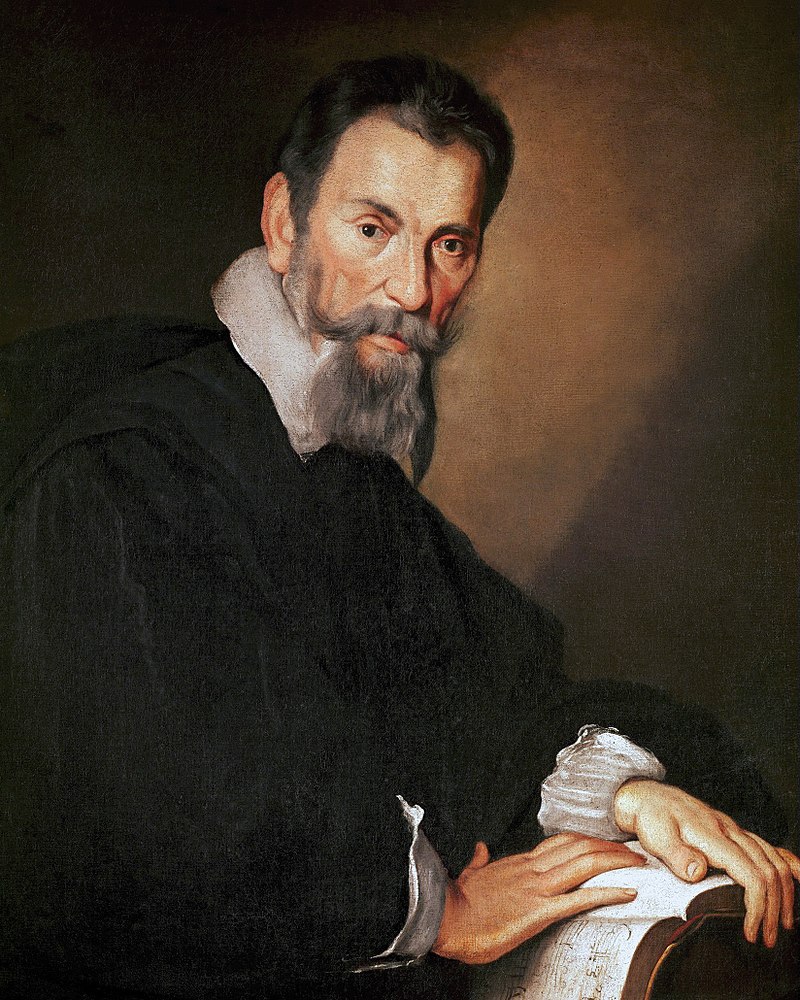Table of Contents
Introduction
In this article I would like to talk to you in the most practical and concise way possible about the madrigal in Claudio Monteverdi (1567-1643), which is part of a poetic-musical genre that flourished in Renaissance Florence, more precisely in the sixteenth century.

The Madrigal In The ‘ 300
In the development of this compositional form, it is necessary to frame two distinct moments: the madrigal of the Ars Nova takes, according to most scholars, the name from the term mandria-mandrialis in the meaning of rural, pastoral. Madrigals with different topics are very rare, although some examples can be found in the literature of celebration (think for example of political tributes, which could sometimes be configured in this form). In ars nova, we generally find two voices, as three-voice writings are rarer and are usually conceived with a different text for each voice.
The Madrigal In The ‘ 500
The madrigal of the ‘ 500, on the contrary, has little in common with that of the ‘ 300. It is of amorous content and does not have a strophic pattern. Let’s not forget that the literary texts on which the madrigals of the Ars Nova were composed were structured on septenary or endecasillabi verses, where all the stanzas, a term with which the groupings of two or more verses are described, were tuned on the same melody while the refrain used a second one of contrasting rhythm; on the contrary, in the madrigal of the ‘ 500 each verse finds its own musical place, which follows with a completely new attention the meaning of the poetic text. If earlier we had a rather monotonous trend with some melodic variation in the refrain, now the melody is continuously reinvented, as well as the polyphonic structure.
Claudio Monteverdi

When we name the madrigal of the ‘ 500 we can not fail to mention Claudio Monteverdi. His eight books of madrigals were written during a period in the History of Music characterized by important changes: first of all, the transition from a modal compositional conception to a tonal one. From the first to the last collection of madrigals there is a period of about half a century (1587-1638). Obviously, in this chronological interval, the Monteverdian madrigals underwent profound changes and only through the overall analysis of his collections we can understand the evolution of this compositional genre between the ‘500 and the ‘600.
The Fight Of Tancredi And Clorinda
To understand how different the sixteenth-century madrigal was in comparison with the fourteenth-century one, it is enough to observe that Monteverdi’s first books of madrigals provide for the use of five vowel types, against the two or three of the oldest Madrigal; in Monteverdi’s latest collection, entitled Madrigali guerrieri et amorosi, we find the masterpiece Il Combattimento di Tancredi e Clorinda, whose text is taken from the events narrated in canto XII of torquato Tasso’s Gerusalemme Liberata . The plot is simple: the Christian knight Tancredi, in love with Clorinda, a Muslim warrior, finds himself unknowingly fighting in a duel with her. Tancredi will discover the identity of his rival only when he pierces her to death. Clorinda at the point of death will convert and, baptized, will face with serenity the passing:
Heaven opens; I go in peace.
Clorinda
Let’s look at the instrumental formation of the work:

The basso continuo accompanies at the beginning of the work a presentation text of the protagonists of the work and introduces us to their background history. Immediately afterwards there is a first rhetorical figure of repetition, called circulatio, which we can recognize in the undulating motion of the melodies that suggests circularity.

This is the first madrigalism, a term that indicates the correspondences between the poetic and the musical text: in this case, the research, the turning, the obstinacy and the determination of Clorinda are made to correspond to the circular motion of the melody. If you do not feel that you are able to analyze this score, do not worry: you can consult the online courses section and check the first availability from the lesson calendar in order to make a private appointment; in this way we can work on your analytical ability from scratch, in particular I recommend the Harmony and Composition course that you can follow privately online, of which you can find the program here. Madrigalism is not only melodic: the correspondences between the poetic and musical texts can be of multiple roots. Immediately below, for example, in the Motto Del Cavallo, which heralds the arrival of Tancredi on horseback, the gallop is rendered with a metric change, from a simple quaternary meter to a simple ternary one.

Just before the fight, there is a very underlined and heavy beginning on the words vansi incontro a passi tardi e lenti . The harmonic movement repeatedly falls into silence and creates an expectation full of tension.

From the serious slowness of this verse a rebuttal of semiquavers is unleashed, in the so-called agitated style, in order to create an effect of tremor and, in fact, excitement through the use of tremolo. In this effect of tension, right at the climax, the scene changes, and it starts to tell something else…

The term Symphony is here to indicate a composition only instrumental, without the use of singing. The colour changes completely, we move to the shade of G minor, with choral homorhythmic writing. Right when Tancredi and Clorinda are about to fight, the poet implements a strategy to involve the viewer in the epic dimension of the story, to bring him to awareness of the greatness of the events that are about to take place: he invokes the abstract goddess of the Night, and asks her to show what is hidden of such a clear story. In this way the composer reveals the background of a fight that was already about to take place: an effective stratagem to keep the viewers’ attention nailed to the plot. In modern storytelling, in avant-garde direction, as well as in the video production of the major youtubers, the use of this stratagem is very common: it is called in medias res and belongs to the oldest rhetoric of Horace, who commented on some artistic choices of Homer’s poetics using this phrase; the story, in other words, begins at its peak, to then be interrupted before the ending and be retraced from the beginning.
Conclusion
On the Madrigal in the ‘ 500 is everything, do not forget to subscribe to the email form so as not to miss future updates and more in-depth analysis of the scores nominated: you will find them in the Musical Analysis category. See you in tomorrow’s article!
- History Of The Piano – The Fortepiano - July 12, 2022
- Curt Sachs – History Of Organology At a Glance - July 8, 2022
- Giuseppe Verdi – Rigoletto, Il Trovatore, La Traviata - June 29, 2022
